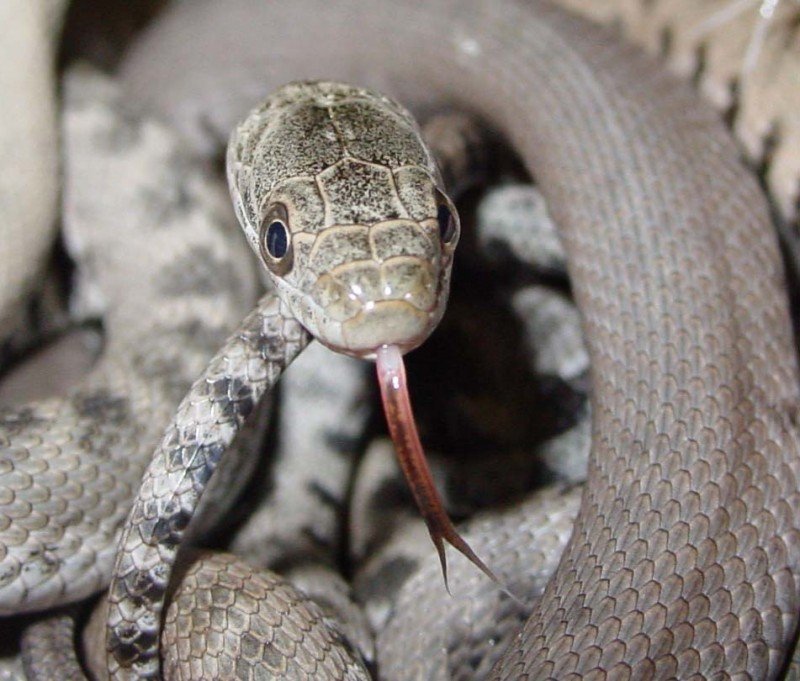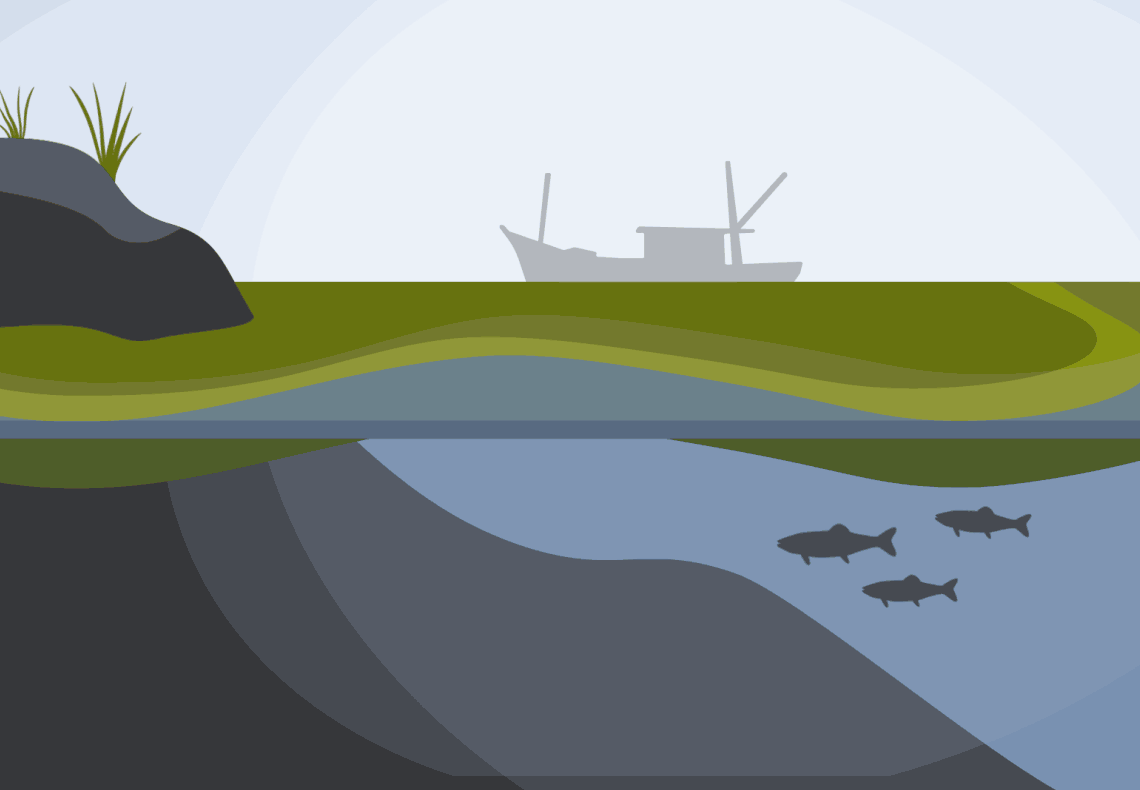
Harmful Algal Bloom Research Initiative Year 3 Report
The third-year report continues to show that the state of Ohio has benefited from the Harmful Algal Bloom Research Initiative.

Making Lake Erie Science Come Alive
It’s been 40 years since The Ohio State University’s Center for Lake Erie Area Research (CLEAR) was first recognized as Ohio’s home for the National Sea Grant College Program, whose dedication to supporting the practical use and conservation of coastal, marine and Great Lakes resources to create a sustainable economy and environment has helped coastal and Great Lakes communities for over 50 years.

Cleaner Is Better
Summer’s here and the time is right… for boating on the lake!
Or just about any other body of water in the state of Ohio. More than half a million boats were registered here in 2017, and all that traffic can leave a mark on Lake Erie, the Ohio River and other rivers and lakes throughout the state. To keep the environment safe and healthy for the future, the Ohio Clean Marinas Program, supporting marinas and boaters in good decision-making, came to be in 2003.

A Living Laboratory
Lake Erie plays a big part in the lives of Ohio residents, from providing drinking water and seafood to creating memories of family vacations and weekend fishing trips. But for some, it can be difficult to see that connection without an experience that draws a specific link between the lake and their personal life. Stone Lab, Ohio Sea Grant’s research, outreach and education facility on Gibraltar Island, aims to make that link more explicit.

Testing, Testing
Stone Lab, Ohio Sea Grant’s teaching and research facility located on South Bass Island, plays a large role in making sure island residents can be confident that their tap water is safe. From research into what turns algal blooms toxic to the nitty-gritty details of weekly water testing for the islands’ water treatment facilities, Stone Lab staff serve their island communities in a variety of ways.
Forecast for Harmful Algal Blooms in Lake Erie 2018
The Ohio State University’s Stone Laboratory and Ohio Sea Grant hosted NOAA’s annual HABs Forecast for western Lake Erie on July 12 from 11 a.m. to 1 p.m. In addition to the official forecast, the event featured spring nutrient loading and projections along with expert commentary and highlights of recent research efforts and successes.

What Are Harmful Algal Blooms? Online Fact Sheet
This online fact sheet will provide you with answers about what makes up a harmful algal bloom, why they form, why they're an issue, and what you can do to help prevent them and keep yourself safe.
Genetic Information Helps Keep Great Lakes Fishes Healthy
It’s been almost a decade since the first outbreak of viral hemorrhagic septicemia virus (VHSv) was seen at the University of Toledo’s Lake Erie Center in the summer of 2006. Dead fish washed up on shore, while others struggled in the shallow water, all showing bright red lesions on their bodies. VHSv is essentially the Ebola of the fish world: a highly contagious virus that causes erratic behavior, internal bleeding and death.
Dr. Carol Stepien, Director of the Lake Erie Center and Professor of Ecology at the University of Toledo (UT), has worked on VHSv in Great Lakes fishes ever since that first outbreak at the beach across the road.

Stone Lab Field Trips - Not Just For Kids
While summers at Stone Lab, Ohio State’s island campus on Lake Erie, are filled with college classes and research projects, spring and fall offer a whole new set of opportunities to students of all ages. Lake Erie Science Field Trips take participants out on the lake on a research cruise, where students trawl for fish and collect water samples, and back into the lab on Gibraltar Island, where a fish dissection gives participants a chance to learn how some of Lake Erie’s inhabitants tick.

Eighty Years of Tiny Lake Erie Critters
It’s easy to get excited about new science: new discoveries, cool things that have never been seen before, a new solution to an old problem. But sometimes, it’s worth taking a step back to look at what’s been done before, and how history can inform future research.
The U.S. Geological Survey (USGS) has been collecting information on western Lake Erie benthos – the mollusks, snails and worms that live in sediments on the lake bottom – since the 1930s.

A Charcoal Scrub for Drinking Water
Most of us don’t think much about water. It’s just the twist of a handle away when we want to take a shower or make that first pot of coffee in the morning. But behind the scenes at the local water plant, water treatment professionals are hard at work to make sure that water is safe to use, and especially safe to drink.

Columbus Events Bring Together Stone Lab Supporters
It was a packed few days in the middle of February as Ohio Sea Grant and Stone Lab staff organized two appreciation events for Stone Lab alumni and donors in Columbus.

Tracking Oxygen in Lake Erie’s Central Basin
Hypoxia, an area of low-oxygen water, develops in the central basin of Lake Erie during the summer and early fall. It’s caused when bacteria at the lake bottom decompose dead algae and use up oxygen in the process faster than it can be replenished from the surface or from photosynthesis. When combined with stratification – the formation of a sharp border between an upper warm layer and a cold bottom layer of water – that region of the lake becomes hypoxic (low in oxygen) or even anoxic (no oxygen). This can lead to fish kills and other negative impacts on the ecosystem.
Stopping Algal Bloom Toxins at the Kitchen Tap
There’s already a lot of activity going on in the aftermath of the 2014 harmful algal bloom (HAB) in Lake Erie, which left residents in the city of Toledo without drinking water. Water treatment plants have added additional testing for the algal toxin microcystin that caused Toledo’s water shutdown, scientists are monitoring HABs as they develop, and backup intakes let larger plants avoid pulling in potentially contaminated water altogether. A University of Toledo team led by Dr. Glenn Lipscomb is taking that activity one step further by showing that reverse osmosis (RO) membranes, an essential component of drinking water purification systems installed under kitchen sinks in many homes, can remove algal toxins from drinking water.

Ohio Sea Grant and the NOAA Marine Debris Program Organize PSA Challenge for Ohio Students
Ohio Sea Grant and the NOAA Marine Debris Program’s Great Lakes office invite students in grades 9-12 from the Lake Erie region of Ohio to participate in the 2018 Ohio Marine Debris Challenge “Communicating for a Clean Future.” Student groups will create public service announcement (PSA) videos that focus on inspiring others to address marine debris.

Lake Erie CSMI 2017 Summaries
The Cooperative Science and Monitoring Initiative (CSMI) is a bi-national effort by the United States and Canada, pursuant to the Great Lakes Water Quality Agreement, to coordinate Great Lakes research and monitoring activities that provide resource managers with the science necessary to support management decisions.
Ohio Sea Grant Researcher Receives NOAA Grant to Study When Algal Blooms Become Harmful
Dr. Justin Chaffin, research scientist for The Ohio State University’s Stone Lab and Ohio Sea Grant, along with partners across Ohio and Michigan, has received funding from the National Oceanic and Atmospheric Administration (NOAA) to study what causes Lake Erie algal blooms to become toxic. The study, which will incorporate both computer modeling and hands-on laboratory experiments, is focused on providing more guidance to water utilities on when they should plan to treat drinking water for algal toxins.

Harmful Algal Bloom Research Initiative Year 2 Report
In the summer of 2014, toxic algae made people near Lake Erie afraid to use their water. After the crisis was over, front-line state agencies in Ohio worked with science teams at Ohio universities to fill in critical gaps in our knowledge—things that were still unknown about tracking and dealing with harmful algal blooms.

Ohio Sea Grant and Stone Lab Release Free Solar Energy Curriculum for Grades 7-12
A new set of lessons from Ohio Sea Grant and Stone Lab introduces students in grades 7-12 to the basics of solar energy via hands-on activities. The free curriculum is aligned with Next Generation Science Standards and Ohio’s Model Science Curriculum, and is available to download at go.osu.edu/teachers.
Ohio Sea Grant Research Continues Development of Sediment Cleanup Technique Using Ultrasound
Ohio Sea Grant researchers are continuing to work on a method to remove contamination from Lake Erie rivers and streams, using ultrasound and chemical agents that bind to contaminants and render them inactive on the river bottom. The eventual goal is to treat contaminated sediments right where they are, instead of having to dredge them up for treatment or disposal. Dr. Linda Weavers and her team at The Ohio State University have built a basic model of a river cross-section in their lab, and are moving from experiments where the contaminated sediment samples are mixed into water to one where the sediment has settled into the bottom of a glass column, closer to how they would find contamination in an actual river or lake.